June 27, 2025
Mobile Commerce Advantages and Disadvantages With Case Studies
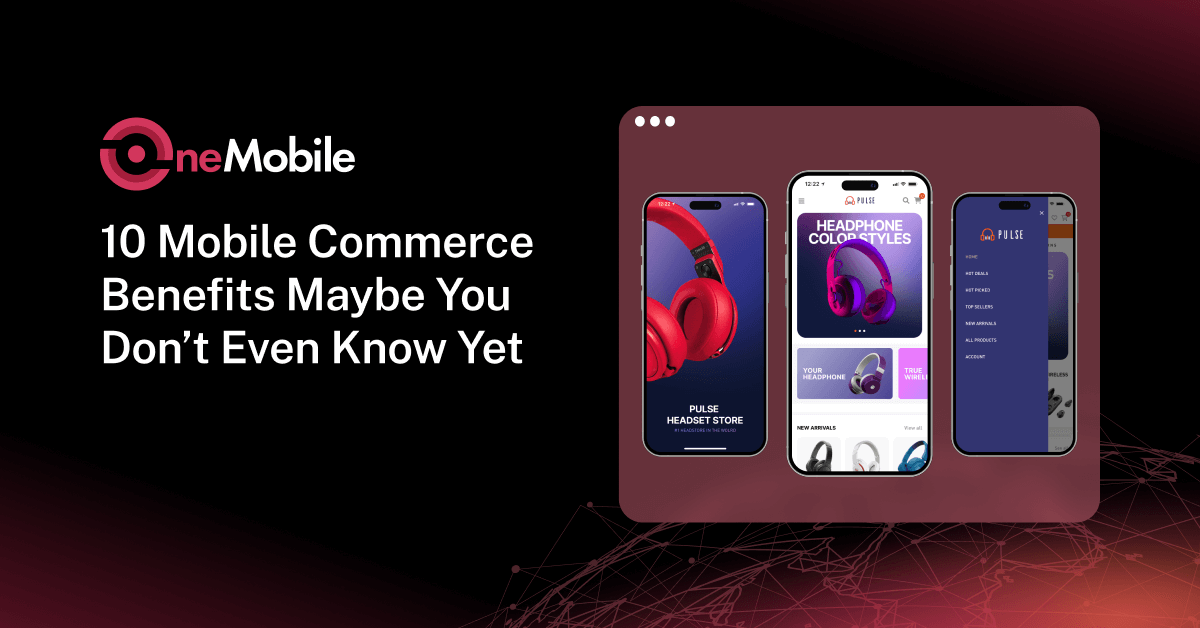
It’s no exaggeration to say that mobile commerce is the new eCommerce, is it? Well, we mean that with consumers increasingly shifting toward a mobile-first experience, there’s never been a better time for brands to go mobile and tap into the full range of mobile commerce benefits.
If you know mobile commerce is important but haven’t quite made the leap to optimize your business for mobile, you’ve come to the right place. In this blog, our eCommerce gurus will walk you through everything you need to know about M-commerce, including:
- What it is
- All the pros and cons
- Top mobile commerce trends to hop on
- Real brand success stories powered by M-commerce
Let’s dive in!
What is mobile commerce?
Mobile commerce, aka M-commerce, refers to the ability to provide eCommerce services directly to consumers through wireless devices, allowing access anytime, anywhere.
After nearly three decades, mobile commerce has become a driving force behind how many businesses connect with customers. With smartphones now central to daily life, it’s easier than ever for consumers to browse and buy on the go.
For merchants, mobile commerce opens the door to countless benefits, from enhancing customer experience, driving more sales, and retaining customers better, which we’ll cover in more detail next.
The benefits of mobile commerce for businesses
With the vast benefits of mobile commerce, optimizing your store for mobile can positively impact every part of your business. Here are the key advantages you can expect when your mobile strategy is executed well:
1. Drive more sales
A strong mobile presence can significantly boost sales by capturing customers who prefer to shop on phones. According to Statista’s Mobile commerce worldwide statistics, m-commerce revenue is projected to reach $2.5 trillion US dollars (63% of eCommerce sales).
For example, Just Sunnies saw 75% of their sales come from mobile after improving their mobile site (a 13% YoY increase). (source: BigCommerce’s Just Sunnies Case Study)
Simply put, meeting customers on their smartphones translates to more opportunities to buy, whether it’s impulse purchases on the go or an easier checkout that reduces abandoned carts.
2. Increase customer retention and lifetime value
Mobile commerce enables deeper customer engagement, leading to better retention and loyalty. Mobile apps, in particular, can drive repeat business through loyalty rewards, personalized content, and push notifications. Sephora, for instance, found that customers using its mobile app spend twice as much annually and purchase twice as often as the average customer.
By having a branded app or mobile channel, merchants stay “top of mind” on customers’ devices. Features like in-app loyalty programs, order histories, and tailored promotions encourage customers to come back and increase their lifetime value.
3. Enhance user experience
Mobile commerce can offer a superior shopping experience by making it incredibly convenient and user-friendly. Smartphones put storefronts into everyone’s pocket, allowing people to browse and buy anytime, anywhere.
Mobile-specific features like one-tap checkout and digital wallets streamline the process so there’s less friction than traditional web checkouts. For example, many sites now offer one-click purchasing and PayPal One Touch or Apple Pay integrations that let users buy with a thumbprint in seconds.
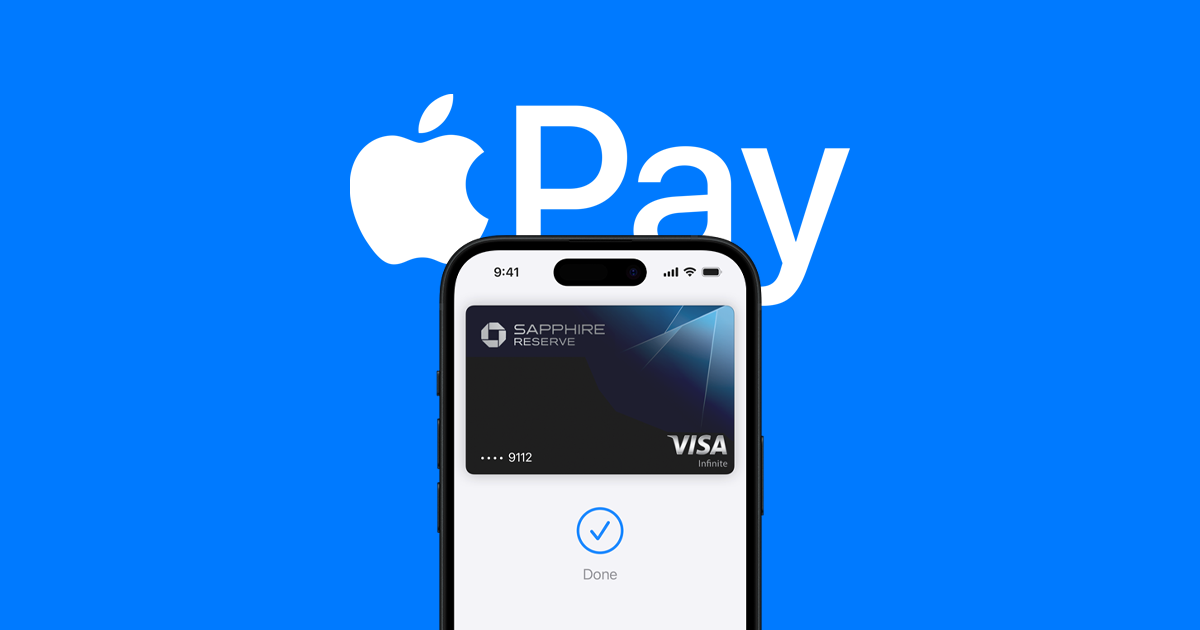
4. Improve product discoverability and visibility
Smartphones have become essential tools for discovering products, enabling consumers to find information and inspiration anytime, anywhere. Mobile commerce effectively leverages this behavior through integration with social media platforms and search engines, significantly boosting product visibility.
For example, platforms like Instagram, Facebook, and TikTok have introduced in-app shopping features such as “shop now” buttons and shoppable posts, allowing users to seamlessly discover and instantly purchase products directly from their social feeds.
TikTok has introduced shopping features to their app
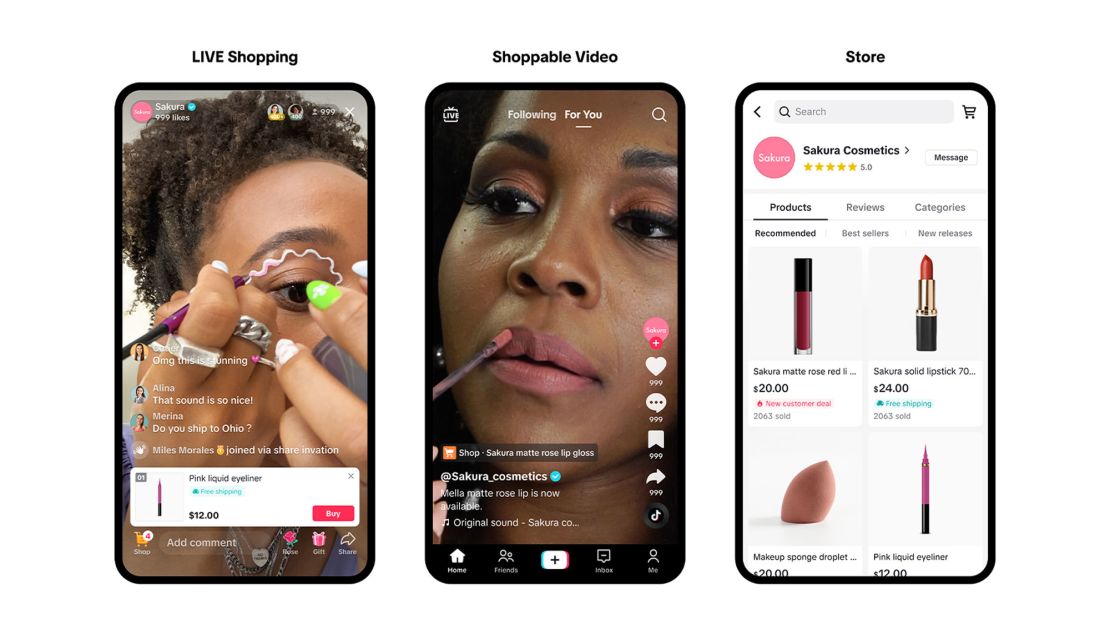
Furthermore, mobile commerce can utilize GPS and location data to send targeted, store-specific offers and highlight local product availability, thereby creating a personalized connection between consumers and relevant nearby products.
By maintaining a robust mobile presence—including SEO-optimized mobile websites, dedicated shopping apps, and SMS marketing—you can effectively maximize your brand and product exposure.
5. Communicate more effectively with customers
Mobile commerce empowers you to communicate directly and personally with customers using methods like SMS marketing, push notifications, in-app messaging, and chatbots. Compared to traditional channels, mobile-specific messaging has significantly higher open rates—around 90% for SMS versus approximately 20% for email, resulting in improved customer engagement and quicker responsiveness.
With mobile channels, you can deliver timely, relevant, and personalized messages. For instance, push notifications can immediately remind customers about abandoned carts or alert them to special offers tailored to their purchasing history, significantly boosting conversion rates.
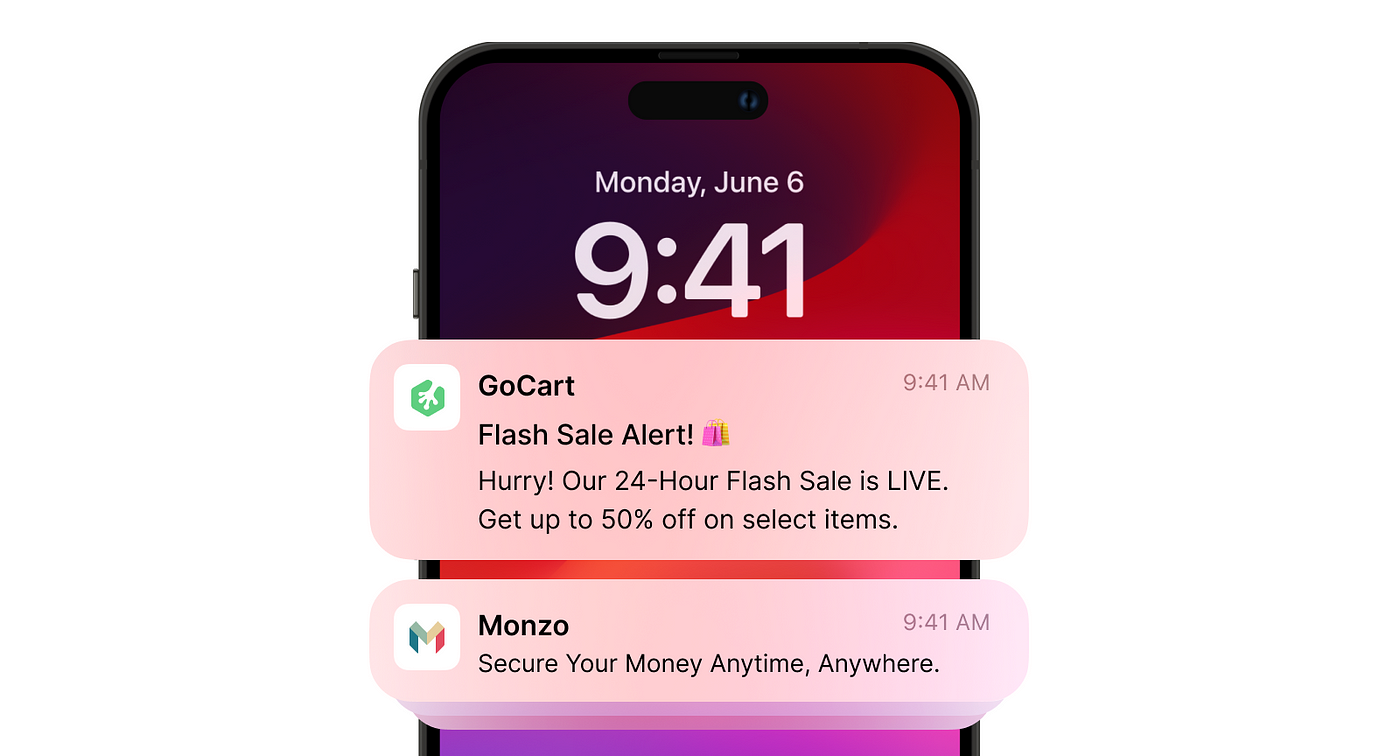
6. Attract a broader audience
Going mobile allows merchants to reach a vast global audience that might otherwise be inaccessible through traditional desktop channels. This is particularly significant in emerging markets, where billions of people primarily rely on mobile devices for internet access.
According to Statista, by 2025, around 1.65 billion people worldwide—about 30% of all internet users—are expected to shop directly from their smartphones. In the U.S. alone, approximately 76% of adults have already made mobile purchases.
So, by providing mobile-optimized shopping experiences, you can effectively attract consumers beyond traditional online demographics. This includes younger generations who prefer mobile interactions, as well as new internet users accessing the web for the first time through affordable smartphones.
7. Gain more in-depth insights into customers’ behavior
Mobile commerce allows you to gain valuable, real-time insights into your customers’ behavior, preferences, and purchasing patterns. By using mobile platforms and apps, you can collect detailed customer data, including browsing history, shopping habits, preferred product categories, and precise interactions within your app or website. These insights enable you to provide highly personalized experiences and optimize your offerings accordingly.
For instance, with OneMobile, you can integrate with Mixpanel or UXCam to see how your app users interact with your mobile app throughout their shopping journey.
8. Assist traditional in-store shoppers
Did you know per ChaseDesign|JGA Tech at Retail Survey, about 67% of today customers regularly use smartphones during in-store shopping trips, researching products, comparing prices, or reading reviews?
Hence, by integrating mobile technology into your physical stores, you can assist customers directly as they shop, improving their overall experience and increasing sales.

9. Reduce marketing and customer acquisition costs
Mobile channels significantly reduce customer acquisition and retention costs by enabling more targeted and cost-effective marketing strategies. You can leverage affordable tools such as push notifications, in-app messaging, SMS offers, and mobile email—all of which offer higher engagement rates and lower costs compared to traditional advertising methods.
For example, if you use OneMobile as your mobile app builder, you can easily send a push notification offering free shipping to customers who previously abandoned a mobile shopping cart, or using geofencing to inform nearby loyalty app users about special in-store promotions.
Moreover, a branded mobile app serves as a valuable channel for ongoing customer engagement, providing merchants with essentially free, owned media for promotions and communications, thus reducing dependency on costly paid advertisements.
10. Gain an edge over your competitors
Having a strong mobile commerce strategy is no longer optional—it’s your best opportunity to stand out and win customers. If you embrace mobile early, you’ll quickly gain an edge over competitors who lag behind.
If you haven’t optimized your online store for mobile yet, you’re likely losing customers who now demand fast, convenient, and seamless shopping experiences. Shoppers simply won’t wait—if your site isn’t mobile-friendly, they’ll head to competitors who provide smoother interactions through apps and responsive websites.
The benefits of mobile commerce from the customers’ perspective
Besides helping merchants drive growth and efficiency, mobile commerce also brings tangible value to your shoppers. Specifically, when implemented properly, mobile commerce empowers your customers to:
1. Shop with ease
Mobile commerce provides people with the freedom to shop whenever and wherever they choose. Whether during a morning commute, while waiting in line, or from the couch late at night, your shoppers aren’t tied to a desktop or a fixed schedule.
They can browse and buy in moments that feel natural to them, without needing to set aside time or switch devices.
2. Check out faster and with less friction
A long, clunky checkout process can be frustrating, especially on a small screen. With mobile commerce, shoppers enjoy faster checkouts thanks to digital wallets, saved payment methods, and one-tap purchases.
3. Discover products that match their needs
Instead of being overwhelmed by endless product listings, shoppers benefit from personalized recommendations tailored to their behavior, preferences, or location. This helps them quickly find what’s relevant and skip what’s not, turning mobile shopping into a curated experience rather than a search task.
Technically, m-commerce makes it less about browsing and more about discovering the right thing at the right time.
4. Stay informed without doing the work
Push notifications and mobile alerts let shoppers stay up to date, without needing to check their email or visit your store constantly.
Specifically, they get reminders when something they wanted is back in stock, when a sale is live, or when their order is on the way. It’s a low-effort way to stay in control of their shopping, with timely updates that feel helpful, not intrusive.
5. Feel confident that their information is safe
Security matters, and mobile commerce gives shoppers peace of mind through features like biometric login, tokenized payments, and encrypted transactions. These protections make it clear that their personal and payment information is handled securely.
That sense of trust removes a key source of hesitation and makes mobile purchasing feel not just convenient, but safe.
Disadvantages of mobile commerce
With great opportunities come inevitable challenges. Despite its many advantages, mobile commerce also presents specific hurdles that you need to be aware of and prepared to address.
1. Fraud risks and privacy concerns
When you conduct transactions on mobile devices, it’s natural to worry about security, for both you and your customers. Unfortunately, mobile fraud is increasing, with cybercriminals exploiting tactics such as SIM swap scams and mobile malware to steal personal data.
💡 To overcome this trust barrier and protect your customers, you need to invest in robust encryption, advanced fraud detection systems, and strong user authentication methods like biometrics.
2. Lack of personal touch
Like eCommerce in general, shopping on a mobile device inherently lacks the warmth and personal connection you get from an in-person retail experience. While your app can offer smart algorithms to recommend products (“You might also like…”), it can’t replicate the friendly interaction of a knowledgeable store associate who recognizes regular customers and offers real-time advice.
💡 To bridge that gap, you might consider incorporating features like live chat support, video consultations, or interactive tutorials, helping your customers feel more connected and supported throughout their shopping journey.
3. Maintain the mobile app’s performance
Creating a smooth, enjoyable mobile-device shopping experience comes with unique challenges. Mobile screens are smaller, and touch navigation demands an intuitive, thumb-friendly design. If your app or site isn’t optimized—think tiny buttons, slow-loading pages, or a clunky checkout process—customers will quickly get frustrated and abandon their carts.
💡 To avoid these pitfalls, prioritize speed and simplicity in your mobile design. Use adaptive layouts, compress images, and create mobile-specific user interfaces that load quickly and feel intuitive.
Brands that benefited from m-commerce
Let’s take a look at some leading brands that have successfully embraced mobile commerce and the strategies that helped them thrive for your inspiration.
1. Sephora
Sephora, the global cosmetics retailer, is often cited as a trailblazer in digital and mobile commerce for the retail sector. Early on, Sephora recognized that its customers were using smartphones as part of their shopping journey (even inside stores), so it invested heavily in a feature-rich mobile app and mobile experiences to meet those needs.

Sephora’ s key mobile commerce features:
- AR virtual try-on (“virtual artist”): Allows users to try makeup in real time using facial recognition—replicating the in-store experience and boosting engagement.
- Loyalty integration (Beauty Insider): Deep integration with the loyalty program personalizes the experience and encourages repeat purchases.
- In-store & app synergy: Real-time inventory checks, in-store Wi-Fi, and app-friendly setups bridge online and offline shopping seamlessly.
✨ Sephora’s mobile commerce success:
Sephora has seen triple-digit growth in mobile commerce: one period saw a 150% increase in mobile sales year-over-year after enhancements to its app and mobile site, and over time, the company noted a 300% increase in mobile shopping activity as its digital innovations took hold.
2. Starbucks
Starbucks has long been heralded for its innovative mobile strategy in the food and beverage industry. By intertwining its hugely popular loyalty program with a sophisticated mobile app, Starbucks transformed how customers buy coffee and engage with the brand.
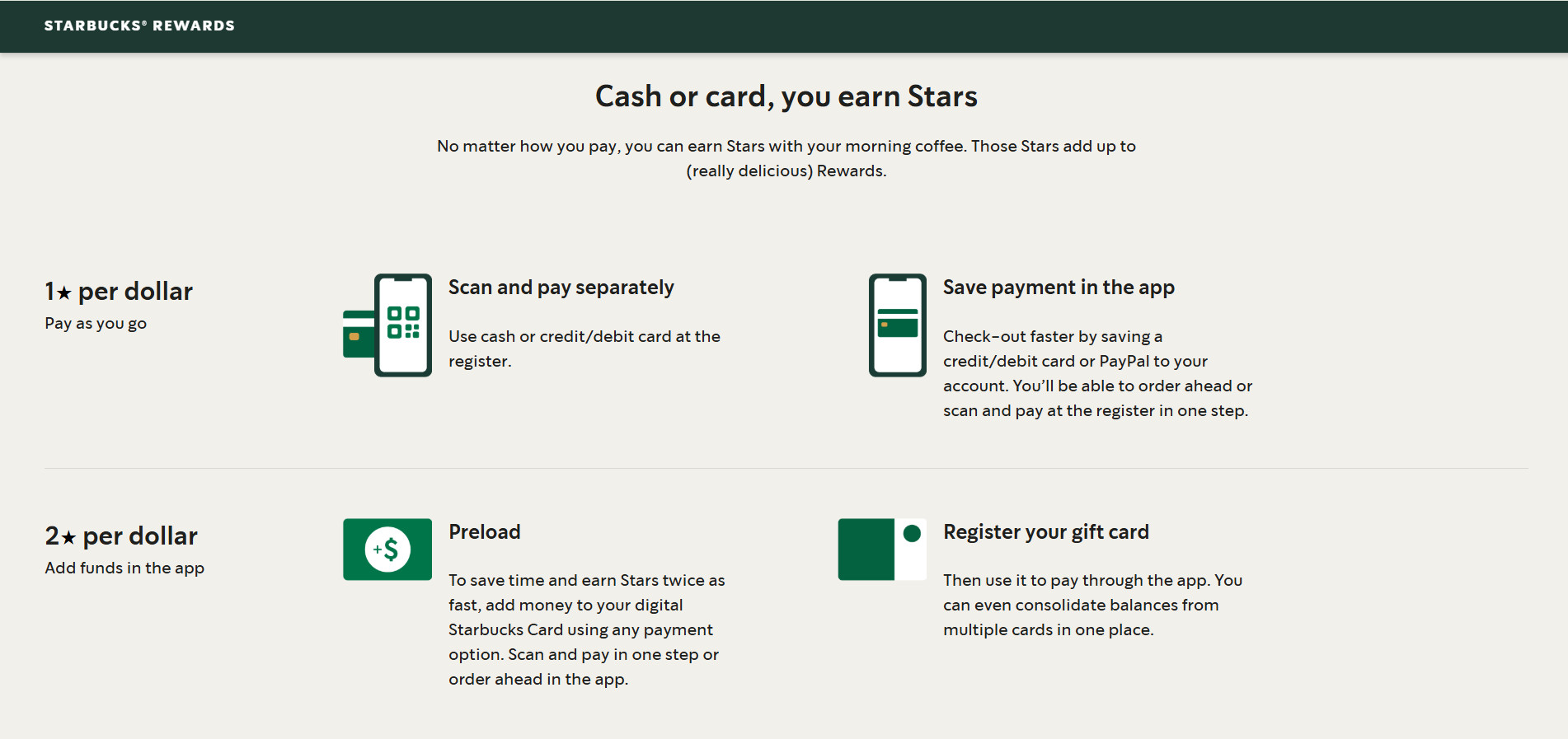
Starbucks’ key mobile commerce features:
- Mobile order & pay integration: Lets users skip lines by ordering and paying ahead—boosts convenience and drives app usage.
- Gamified loyalty program (Starbucks Rewards): Tied to purchases, the app rewards users with Stars, personalized offers, challenges, and promotions to encourage repeat visits.
- Seamless payment & personalization: Stores payment info for contactless checkout and offers features like saved favorites, custom orders, and nearby store locators to enhance user experience.
✨ Starbucks’ mobile commerce success:
Over two-thirds of all Starbucks orders now come from either the mobile app, drive-thru, or delivery channels, with about 26% of total sales coming through the mobile app alone
3. Dominos
Domino’s Pizza is often cited as a prime example of a company reinventing itself through technology and mobile commerce. Once known mainly for pizza delivery, Domino’s aggressively invested in digital ordering and became a self-proclaimed “technology company,” gaining a lead in the competitive pizza market by leveraging mobile and online ordering.

Dominos’s key mobile commerce features:
- Multi-channel ordering & convenience: Domino’s enables ordering via a mobile-friendly website, native apps, smart speakers, smartwatches, chatbots, text, social media, and even car dashboard
- Real-time order tracking & easy reordering: The Domino’s Tracker provides live updates from order placement to delivery, while the “Easy Order” feature lets customers save and reorder their favorite meals with a single tap or voice command.
- Personalized experience & loyalty integration: Domino’s combines a robust loyalty program with push notifications and data-driven personalized offers
✨ Domino’s mobile commerce success:
Today, over 60% of all Domino’s orders in the U.S. come through mobile devices. From 2012 to 2019, Domino’s digital initiatives (including the mobile app overhaul) helped boost online orders by 44.5% and won the company accolades such as “Mobile Marketing Brand of the Decade” in 2019.
Conclusion
Mobile commerce has transformed the way customers shop and how you connect with them. While it offers numerous benefits—from increased sales and deeper customer insights to enhanced in-store experiences—it also comes with challenges such as security concerns, the loss of personal touch, and the need to maintain seamless mobile performance.
Frequently asked questions
What are the cons of mobile commerce?
Mobile commerce can pose security and privacy risks, including fraud and data breaches. It may also lack the personal, human interaction found in physical stores, and requires careful attention to app and site performance to avoid frustrating customers.
What feature does mobile commerce provide?
Mobile commerce offers features like personalized messaging (push notifications, SMS), seamless payment options (digital wallets, one-tap checkout), real-time customer insights through analytics, omnichannel integration (BOPIS), and interactive technologies like AR and chatbots.
What are the advantages of mobile commerce?
The advantages include higher sales and customer retention, improved product discoverability, broader audience reach, cost-effective marketing, enhanced user experience, better communication, and gaining a competitive advantage through innovation and convenience.
What are the three types of mobile commerce?
The three primary types of mobile commerce are:
- Mobile shopping – Buying and selling goods/services via mobile devices.
- Mobile banking – Managing financial transactions through mobile platforms.
- Mobile payments – Making payments using mobile wallets, apps, or contactless technology.
Table of Contents
Table of Contents
Read more articles
How To Advertise Your Mobile App During Pre-Launch, Launch and Post-Launch Stage
By Alexandre Le
October 21, 2025
14 Common Apple App Store Rejections and How To Avoid Them
By Alexandre Le
October 21, 2025







